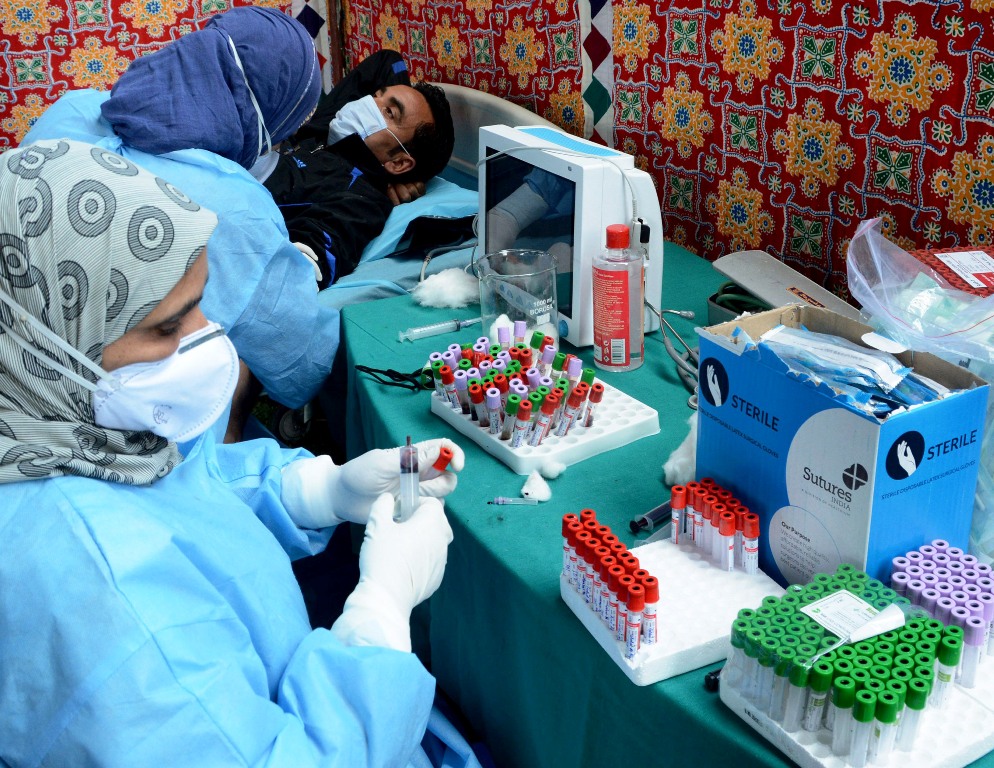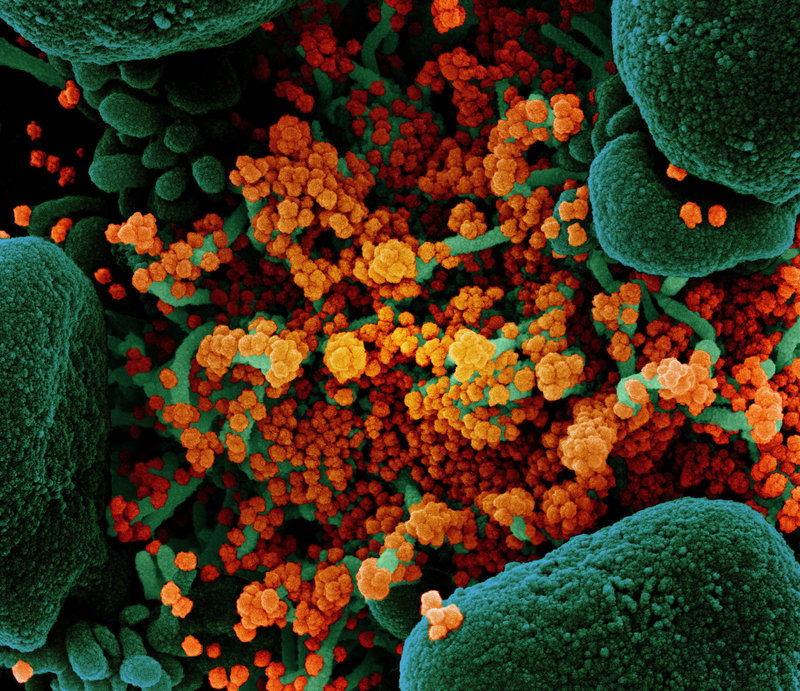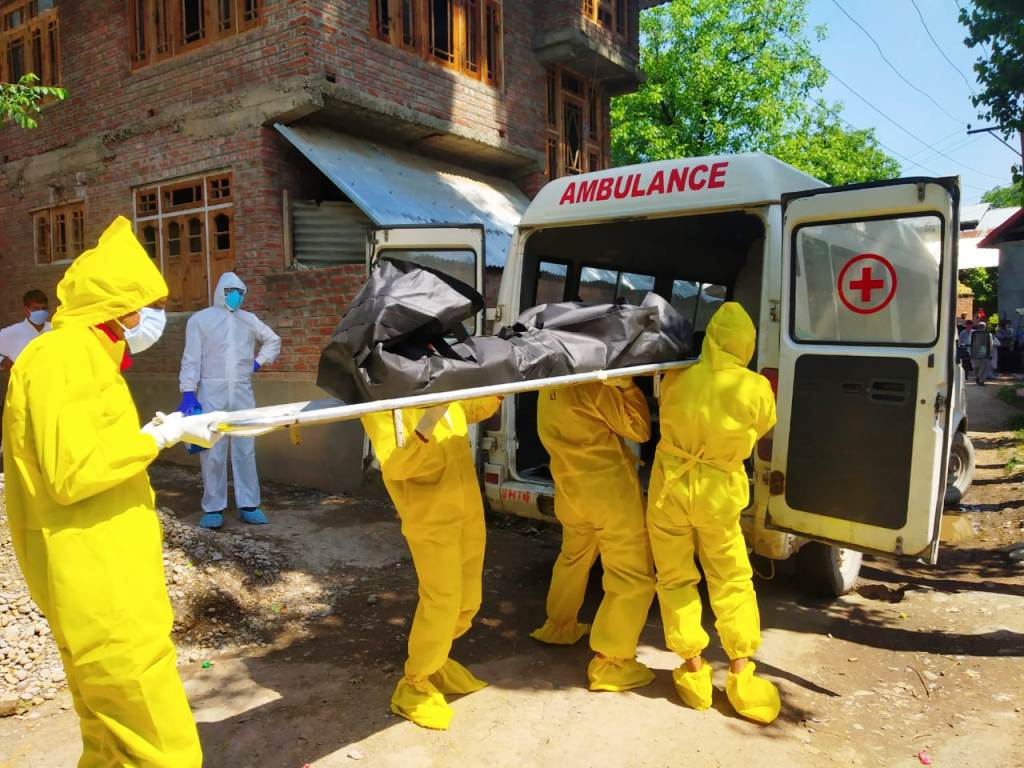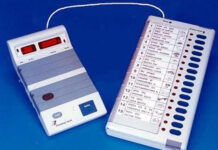by Khalid Bashir Gura
SRINAGAR: With the vaccine nowhere in sight, the world scientists have turned to the supercomputers to seek solutions for containing the contagion. The Covid-19 has already killed 1.15 million people as the infection has impacted more than 42 million across the world.

After the initial race for vaccine – some countries say they are almost ready, the scientists are trying to harness the powers of supercomputers in times of medical emergency, pinning hopes on the machines with high levels of power and performance employed by the human in genetic, biological, and weapons research.
The questions like how to tackle the Covid-19 pandemic are the ones being asked to supercomputers.
Scientists are using supercomputers for several challenging tasks, such as understanding how the virus spreads in a community, how it infects the human body, as well as for finding cure and vaccine.
What Is A Supercomputer?
Since the 1990’s, the power of supercomputers has increased by a factor of a million. With a combined power of roughly a million laptops, Summit at Oak Ridge National Laboratory is presently one of the world’s most powerful supercomputer after Japan’s Fugaku.
The Summit supercomputer at Oak Ridge National laboratory has a peak performance of 200,000 trillion calculations per second – equivalent to about a million laptops.
The largest number of Covid-19 supercomputing projects involves designing drugs. Even though, it’s likely to take several effective drugs to treat the disease, supercomputers let researchers take a rational approach and aim to selectively muzzle proteins that SARS-CoV-2, the virus that causes Covid-19, needs for its life cycle.
The world’s fastest supercomputers have been tasked with going through thousands of molecules to find potential compounds that could be used to create a Coronavirus vaccine. Studies found that the surface of the Coronaviruses is covered with crown-like proteins, which allow the viruses to bind and invade human cells. Hence to find a drug that can be used against the virus, it is significant to understand the proteins the virus contains and the human cell host receptors and the way other chemical compounds interact with them.
The Achievement?
Jeremy Smith is a biophysicist at the Center for Molecular Biophysics at the University of Tennessee and Oak Ridge National Laboratory where supercomputer is used to discover drugs. “We build three-dimensional virtual models of biological molecules like the proteins used by cells and viruses, and simulate how various chemical compounds interact with those proteins. We test thousands of compounds to find the ones that “dock” with a target protein. Those compounds that fit, lock-and-key style, with the protein are potential therapies,” she writes in the news portal scroll.in
Similarly, the newly crowned Japan’s Fugaku supercomputer which is the world’s fastest supercomputer is being deployed in the fight against the Coronavirus. As reported it carried out 2.8 times more calculations per second than an IBM machine in the US called The Summit.
As media reports suggest, Fugaku has already been put to work on fighting the Coronavirus, simulating how droplets would spread in office spaces with partitions installed or in packed trains with the windows open.

“Using the world’s fastest supercomputer, Fugaku, Japanese research giant Riken advised several ways to lower infection risks in public settings,” Reuters reported.
Its lead researcher, Makoto Tsubokura, said that opening windows on commuter trains can increase the ventilation by two to three times, lowering the concentration of ambient microbes. But to achieve adequate ventilation, there needs to be spaces between passengers, the simulations showed, representing a drastic change from Japan’s notoriously packed commuter trains. Other findings advised the installation of partitions in offices and classrooms, while in hospitals, beds should be surrounded by curtains that touch the ceiling.
Supercomputer-driven models simulated in Japan suggested that operating commuter trains with windows open and limiting the number of passengers may help reduce the risk of Coronavirus infections, as scientists warn of airborne spread of the virus.
“In the US, these machines have been able to simulate 8,000 compounds and have identified 77 molecules that could work against the virus. Further efforts are now underway to refine the list and identify which of those drug compounds and molecules have the highest binding affinity with the virus, thus being able to disarm it most efficiently,” reported Indian Express.
Further, these computers can also help in developing a vaccine for the novel Coronavirus by identifying the virus proteins that can help create immunity among humans. The other ways in which supercomputers are helping include studying the structure and origin of the novel Coronavirus, analyzing the spread of the virus in a population, as well as how it interacts with cells in the human body.
Bradykinin system
Fortunately, supercomputers are very good at churning through huge amounts of data. The Summit supercomputer at Oak Ridge National Laboratory analysed more than 40,000 individual genes in an effort to understand what happens when someone is exposed to the virus.
According to a recent study on the results, the virus spikes blood pressure levels, which can cause blood vessels to leak in the lungs (which can cause seizures, stroke, coughs, dizziness and more).

A team led by Dan Jacobson of the US Department of Energy’s Oak Ridge National Laboratory recently used the Summit supercomputer to analyse genes from cells in the lung fluid of nine Covid-19 patients compared with 40 control patients.
The computational analyses, published in the journal eLife in July, suggest that genes related to one of the body’s systems responsible for lowering blood pressure the bradykinin system appears to be excessively “turned on” in the lung fluid cells of those with the virus.
Based on their analyses, the team believes that bradykinin the compound that dilates blood vessels and makes them permeable is overproduced in the bodies of Covid-19 patients. Excessive bradykinin leads to leaky blood vessels, allowing fluid to build up in the body’s soft tissues.
“Much attention has focused on what’s known as the cytokine storm, a severe reaction in which the body releases an excess of cytokines, a variety of small proteins that help regulate the immune system. However, the researchers believe that a bradykinin storm may instead be to blame for much of the viral pathogenesis.
The bradykinin storm could explain the wide variety of symptoms experienced by Covid-19 patients, such as muscle pain, fatigue, nausea, vomiting, diarrhoea, headaches, and decreased cognitive function.
Similar symptoms are also experienced by patients with other bradykinin-related conditions such as hereditary angioedema, a genetic condition that is characterized by episodes of severe swelling throughout the body,” reported HospiMedica. However, Jacobson said, lung-fluid samples from Covid-19 patients consistently revealed overexpression of genes that produce bradykinin, while also under expressing genes that would inhibit or break down bradykinin.

As Jacobson’s paper notes, extreme bradykinin levels in various organs can lead to dry coughs, myalgia, fatigue, nausea, vomiting, diarrhoea, anorexia, headaches, decreased cognitive function, arrhythmia and sudden cardiac death. All of which have been associated with various manifestations of Covid-19.
The Newer Revelations
Humidity can have a large effect on the dispersion of virus particles, leading to heightened Coronavirus contagion risks in dry, indoor conditions during the winter months showed a Japanese supercomputer.
According to a study by research giant Riken and Kobe University, the finding suggests that the use of humidifiers may help limit infections during winter times when window ventilation is not possible. The researchers used the Fugaku supercomputer to model the emission and flow of virus-like particles from infected people in a variety of indoor environments.
Further, the study also revealed that clear face shields are not as effective as masks in preventing the spread of aerosols. Other findings showed that diners are more at risk from people to their side compared to across the table, and the number of singers in choruses should be limited and spaced out.















